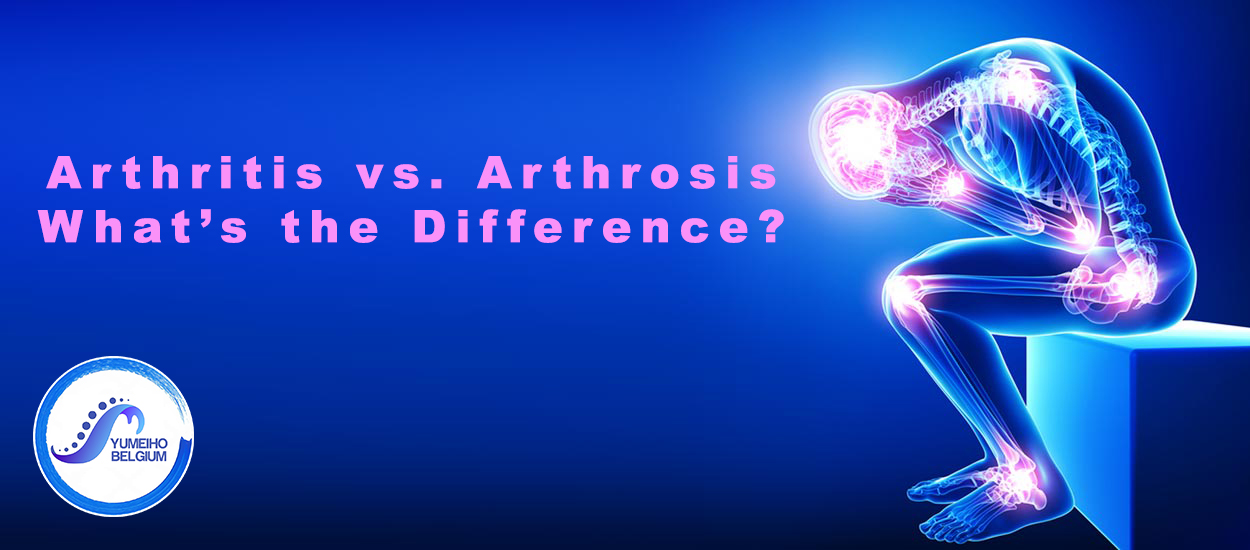Arthritis vs. Arthrosis – What’s the Difference?
They both share similar symptoms and affect your joints, ligaments and bones. But when you’re considering arthritis vs. arthrosis, it’s important to know the key distinctions between both conditions.
What Is Arthritis?
Arthritis is the general term that describes various kinds of conditions that inflame your joints. In a few rare cases, arthritis may affect your skin, muscles or organs. Three common types of arthritis are rheumatoid arthritis, osteoarthritis and gout.
Rheumatoid arthritis makes the synovial membranes surrounding your joints swell and become inflamed. If this condition isn’t properly treated, the membrane and cartilage at the end of the bones will eventually be destroyed.
Osteoarthritis is caused by the deterioration of the cartilage at the end of your bones. The cartilage is the tissue that enables your bones and joints to move smoothly. Osteoarthritis occurs more in the elderly. It can be very painful due to bone-to-bone contact in the joints. It results in swelling and stiffness.
What Are the Symptoms of Arthritis?
The symptoms you see depend on the kind of arthritis in the joints. But the symptoms that usually appear first are stiffness and joint pain. Other symptoms that accompany all kinds of arthritis with inflammation include:
- Shorter range of motion
- Red skin at the affected joints
- Swelling at the joints
What Is Arthrosis?
Arthrosis is the other name for osteoarthritis. This is the most frequently diagnosed form of arthritis. Arthrosis occurs due to wear and tear of the cartilage at the joints. It usually happens because of aging or intense use of the joints during sports, exercise or other activities. After some time, all the cartilage at the end of the bones may wear out and cause painful bone-to-bone contact. Arthrosis can affect any joint, but it’s more common in the knees, hips, hands and neck.
What Are the Symptoms of Arthrosis?
Arthrosis has symptoms that are common to all kinds of arthritis, such as:
- Joint pain
- Stiffness in the joint
- Reduced flexibility in the affected joint
- Bone-to-bone rubbing
- Swelling around the affected joint
- Bone spurs
What Is the Difference Between Arthritis and Arthrosis?
The main difference between arthritis and arthrosis is that arthritis is the term that covers all the types of arthritis, including arthrosis. Another difference is that arthrosis can affect any joint within your body, and it occurs more frequently as you get older due to wear and tear at your joints. In some cases, arthritis is used to refer to rheumatoid arthritis, while osteoarthritis is used to refer to arthrosis.
The Treatment
The main therapeutic methods are physical measures including recovery treatment; support devices; exercises to improve strength, flexibility and endurance; and lifestyle changes. Adjuvant therapies include drug therapy and surgical treatment. It is best to begin recovery techniques before a disability sets in. Exercises (mobility, isometric, isotonic, isokinetic, postural, strength – ) maintain cartilage health and joint mobility and increase the ability of tendons and muscles to absorb stress during movement in that joint. Exercise can sometimes stop or even relieve osteoarthritis of the hip or knee. Stretching exercises should be performed daily. Immobilization for a longer period of time can favor the installation of muscle contractions and aggravate the clinical evolution. However, a few minutes of rest (every 4-6 hours during the day) can be beneficial if there is a balance with periods of activity and exercise. It can be helpful to change your lifestyle. For example, in the case of a patient with osteoarthritis of the lumbar spine, hip or knee, soft and deep armchairs, such as those leaning backwards in which they impose an inappropriate posture and lifting effort, should be avoided. Regular use of knee support cushions promotes contractions and should also be avoided. Patients should use chairs with a straight back, without recesses, to sleep on a hard bed, possibly to use a headboard, to use in the car a chair pulled forward and with an ergonomic design, to do postural exercises, to wear shoes that provide adequate support or footwear for athletics and continue to be professionally and physically active.
Exercises should be performed according to tolerance. During acute inflammation, passive movements are useful for preventing muscle contractions. However, contractions can be prevented and muscle strength restored more effectively after the inflammation begins to subside.
Under no circumstances will manual therapy replace or discontinue medical or drugs prescriptions. The role of manual therapy is to help in the process of stopping or slowing down joint degeneration, and of course to improve your lifestyle.

